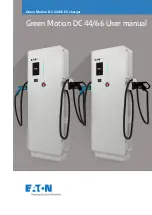
LANE CHANGING
ACC may not detect a vehicle until it is completely in the
lane in which you are traveling. In the following lane
changing example, ACC has not yet detected the vehicle
changing lanes and it may not detect the vehicle until
it's too late for the ACC system to take action. ACC may
not detect a vehicle until it is completely in the lane.
There may not be sufficient distance to the lane-
changing vehicle. Always be attentive and ready to
apply the brakes if necessary.
NARROW VEHICLES
Some narrow vehicles traveling near the outer edges of
the lane or edging into the lane are not detected until
they have moved fully into the lane. There may not be
sufficient distance to the vehicle ahead.
STATIONARY OBJECTS AND VEHICLES
ACC does not react to stationary objects or vehicles. For
example, ACC will not react in situations where the
vehicle you are following exits your lane and the vehicle
ahead is stopped in your lane. It will consider this
stopped vehicle a stationary object as it did not previ-
ously detect movement from it. Always be attentive and
ready to apply the brakes if necessary.
PARKSENSE REAR PARK ASSIST —
IF EQUIPPED
The ParkSense Rear Park Assist system provides visual
and audible indications of the distance between the rear
fascia/bumper and a detected obstacle when backing up
(e.g. during a parking maneuver). For limitations of this
system and recommendations, see
ParkSense will retain the last system state (enabled or
disabled) from the last ignition cycle when the ignition
is placed in the ON/RUN position.
ParkSense can be active only when the gear selector is in
REVERSE. If ParkSense is enabled at this gear selector
position, the system will remain active until the vehicle
speed is increased to approximately 7 mph (11 km/h) or
above. When in REVERSE and above the system's operat-
ing speed, a warning will appear within the instrument
cluster display indicating the vehicle speed is too fast. The
system will become active again if the vehicle speed is
decreased to less than approximately 6 mph (9 km/h).
PARKSENSE SENSORS
The four ParkSense sensors, located in the rear fascia/
bumper, monitor the area behind the vehicle that is
within the sensors’ field of view. The sensors can detect
obstacles from approximately 12 inches (30 cm) up to
79 inches (200 cm) from the rear fascia/bumper in the
horizontal direction, depending on the location, type
and orientation of the obstacle.
PARKSENSE WARNING DISPLAY
The ParkSense Warning screen is located within the
instrument cluster display
page 124. It provides
visual warnings to indicate the distance between the
rear fascia/bumper and the detected obstacle.
Lane Changing Example
Narrow Vehicle Example
Stationary Object And Stationary Vehicle Example
STARTING AND OPERATING
179
4
5538906_24_JL_OM_EN_USC_t_E1.pdf 179
5/22/2023 9:02:24 AM
















































